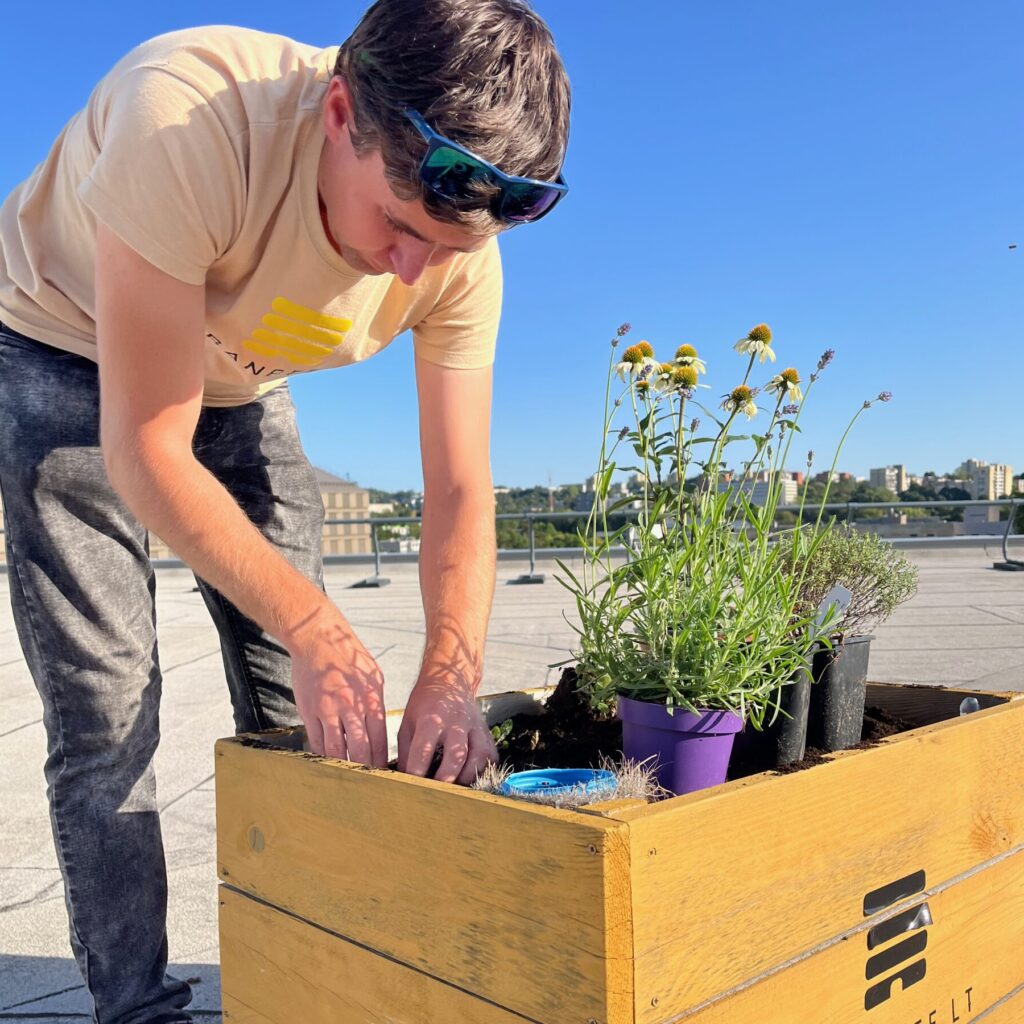Green roofs and green spaces for sustainable urban living
Flower boxes with beekeeping services
After selecting the beekeeping package that suits your needs, we recommend taking advantage of the opportunity to simultaneously install handmade rooftop planters filled with honey-producing plants.
These planters are constructed from unused beehives, thereby reducing the need for new resources. Our beekeepers carefully select the most suitable seasonal plants, ensuring a continuous food source for the nearby bees.
Moreover, these rooftop planters serve multiple functions: they collect excess rainfall, filter the air, and help reduce the risk of urban overheating (Urban Heat Island Effect).

Green roofs and green spaces
For those who have the opportunity to utilize flat rooftop space, we suggest putting it to work by planting drought-resistant low-growing plants, such as sedums, to create a green roof covering.
We fill this space with undemanding perennial plants – sedums. Sedums, with their water-retaining leaves, are particularly resilient to droughts. These succulent plants form a kind of carpet, attracting bees and other pollinators.
Green roofs absorb excess rainfall, contribute to increasing urban biodiversity, and protect city roofs from erosion.

Enhancing the efficiency of solar power systems while enriching the environment
Enhance the environment of your solar power park by replacing mowed lawns with pollinator-friendly gardens.
Perennial plants not only reduce environmental maintenance costs but also boost the efficiency of the solar panels. An increasing number of clean energy companies are opting to utilize solar panel areas and convert them into productive spaces teeming with biodiversity.
Solar power parks provide a suitable and safe habitat for beekeeping, while the garden plantings also offer diverse food reserves.

